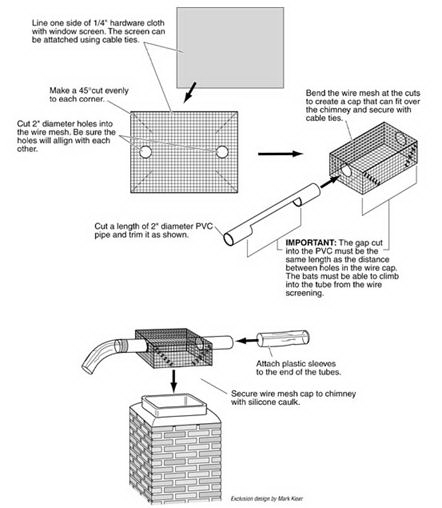Bats in Buildings: An Information and Exclusion Guide
Barbara French, Laura Finn and Mark Kiser
For detailed information on bats in buildings and

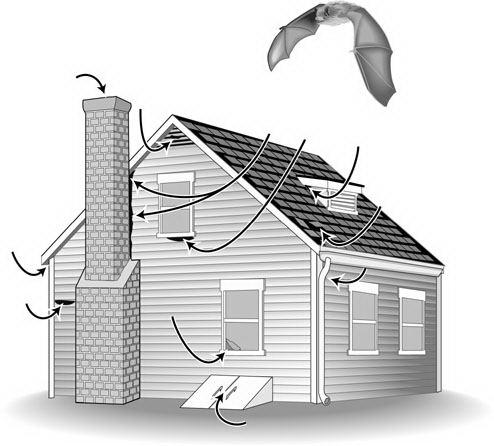
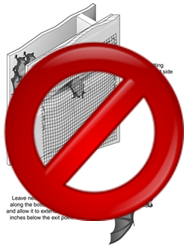

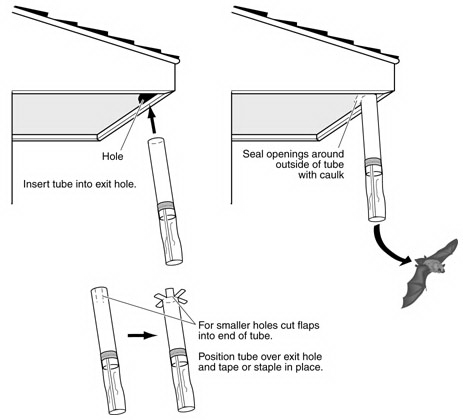

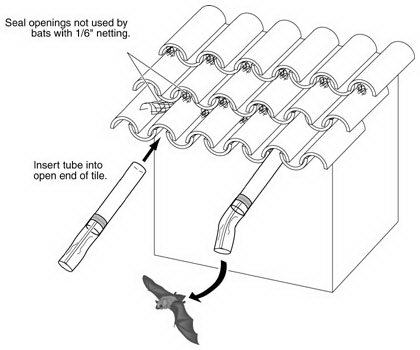
After the tube has been inserted into or over the opening used by bats, any spaces between the outer rim of the tube and the building must be sealed shut. Be sure also to seal shut any other openings in the building that bats could use to reenter. Leave the tube in place for a minimum of five to seven days to ensure all bats have exited. After the bats have been excluded, the tube should be removed and the opening permanently sealed.
Tiles are sometimes temporarily removed to replace a layer of tar paper. When this is done, a layer of coarse fiberglass batting can be put over the tar paper and under the tiles. Constantine (1979) found that the fiberglass layer repelled bats, although he recommended against use of batting within 6 inches (15 cm) of open tile ends to prevent birds from pulling it out for nesting material
Bats may also enter a building through spaces beneath corrugated or galvanized roofing sheets. These roofs can be sealed with a variety of materials such as caulk backing rod during months when bats are not present, or after they have been excluded from a building by use of exclusion tubes..
